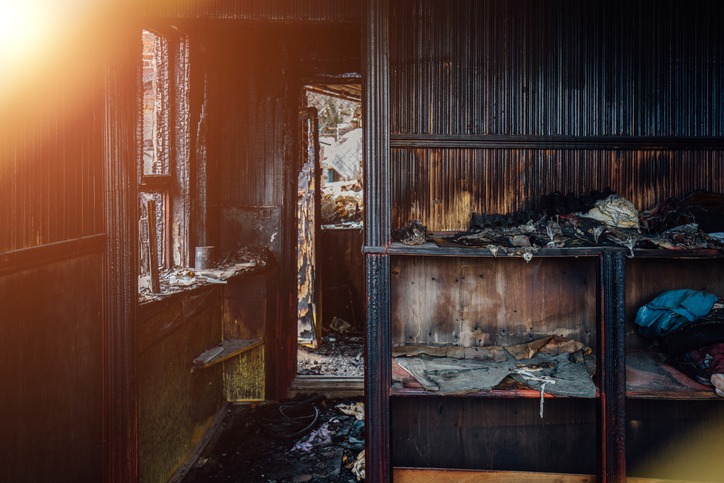Experiencing a fire in your home can be overwhelming and stressful. When the flames have been extinguished and the smoke clears, the process of restoration begins. But where exactly does this process start? We’ll break it down into manageable steps, providing insights into how professionals tackle fire damage restoration from the ground up.
What Is the Initial Assessment?
The first step in any fire damage restoration project is a thorough assessment by experts. This initial evaluation helps to determine the extent of the damage and what needs to be done to return the property to its pre-fire condition. It’s not just about looking at the visible damage but also accounting for unseen issues.
Evaluating Structural Integrity
The structural integrity of the home is paramount. Professionals assess whether the building is safe to enter and any parts that need immediate attention. Walls, ceilings, and floors are inspected meticulously to ensure there are no risks of collapse. This careful evaluation helps prioritize repairs and keeps everyone safe during the restoration process.
Smoke and Soot Damage
Smoke and soot can permeate almost every surface, leaving behind odors and residue. During the assessment, experts identify areas with severe smoke damage and decide on the best cleaning methods to remove these residues effectively. Specialized techniques are used to ensure that surfaces are thoroughly cleaned, reducing the risk of lingering odors and potential health hazards.
Planning the Restoration Process
Once the assessment is complete, the next step involves planning the restoration. This plan covers everything from cleaning to repairing and potentially rebuilding structures within the home.
Setting Priorities
Every fire leaves different kinds of damage, and understanding these priorities helps focus the restoration efforts. Some common priorities include:
-
Addressing any water damage caused by firefighting efforts
-
Removing debris and damaged materials
-
Cleaning smoke and soot from surfaces
Budgeting and Scheduling
Budgeting and scheduling are critical components of a fire damage restoration plan. By estimating costs and setting timelines, homeowners gain a clear understanding of the financial and time commitments involved. This transparency helps them prepare both financially and emotionally, reducing uncertainty during the restoration process. It ensures that everyone is aligned on expectations and goals.
Cleaning and Restoration
The actual cleaning and restoration process is comprehensive and tackles different aspects of damage.
Fire Damage Cleanup
Cleaning involves removing debris and materials that can’t be salvaged. Often, entire sections of walls or roofing may need replacement due to extensive damage. A fire and water damage restoration company specializes in comprehensive cleanup, ensuring no remnants of the fire remain. They focus on both visible damage and hidden issues to restore the safety and integrity of the home.
Handling Water Damage
Water damage is a common issue after a fire due to firefighting efforts. Water damage repair typically involves drying out affected areas, removing damaged flooring, and preventing mold growth. Quick and efficient work is essential to prevent additional issues, such as structural weakening. Professionals use industrial equipment to ensure thorough drying and dehumidification.
Professional Cleaning Services
Once structural and water issues are addressed, attention turns to surfaces affected by smoke and soot. Professional carpet cleaning services are vital for restoring carpets, furniture, and other personal items. They employ specialized equipment and cleaning solutions tailored to removing soot and odors. This step helps bring comfort and normalcy back to the living space.
Repair and Reconstruction
Repairing and rebuilding are the final steps in the restoration journey. It’s a phase where the home starts looking like its pre-fire state again.
Replacing Damaged Structures
Replacing damaged roofs, walls, and flooring is a vital part of the restoration process. Skilled carpenters and construction experts carry out this work to ensure that everything meets safety standards and looks as good as new. This phase not only restores structural integrity but also helps in enhancing the overall aesthetics of your home. It’s crucial to use quality materials to prevent future issues and maintain property value.
Electrical and Plumbing Systems
Fires can severely impact electrical and plumbing systems, posing potential safety hazards. Professionals meticulously assess the damage to these systems and carefully replace wiring, fixtures, and pipes where necessary. This ensures that your home is safe and functional, preventing risks such as electrical fires or water leaks. Updated systems can also improve energy efficiency and reliability.
Final Thoughts
Restoration projects following a fire begin with a thorough assessment and proceed through cleaning, repair, and reconstruction. Each stage is crucial to ensure the safety and comfort of the home. Understanding these steps can help you anticipate what lies ahead in your restoration journey, making the process less daunting.
By relying on professional expertise, you can ensure that the work is done efficiently and effectively. These experts not only restore the physical structure but also help bring back the sense of home and normalcy. With their guidance, your home can once again become a safe and welcoming environment for you and your family.
